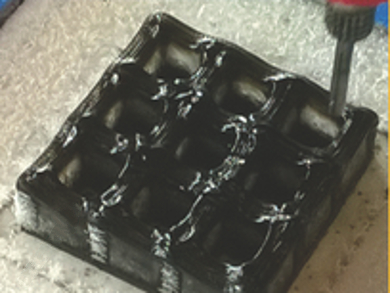Graphene aerogels have potential uses in many applications, from energy storage and pressure sensing to thermal insulation and shock damping. Their structure, however, needs to be tailored to these varied applications. Freeze casting, which uses ice as a structural template, enables manipulation of the microstructure, while 3D printing approaches can be used to control the macrostructure of the graphene aerogel.
Chi Zhou, State University of New York at Buffalo, NY, USA, Dong Lin, Kansas State University, Manhattan, USA, and colleagues used multinozzle inkjet printing and freeze casting simultaneously by employing a water-based graphene oxide suspension as ink and rapidly freezing it on a cold sink at –25 °C.
Multinozzle inkjet printing allows the construction of novel 3D structures on the macro scale, while freeze casting controls the microstructure of the aerogel and causes the desired low density and large surface area. The printed aerogels exhibit high compressibility, mechanical robustness, and high electrical conductivity. According to the team, this technique could be used to engineer aerogels for a variety of applications.
- 3D Printing of Graphene Aerogels,
Qiangqiang Zhang, Feng Zhang, Sai Pradeep Medarametla, Hui Li, Chi Zhou, Dong Lin,
Small 2015.
DOI: 10.1002/smll.201503524




